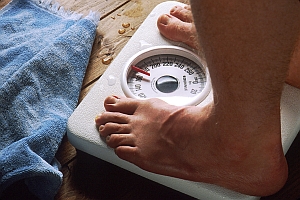Economists and public health researchers at RTI International and Duke University in North Carolina, and U.S. Department of Agriculture forecast that taxes on sugary drinks can reduce the calorie intake of consumers, but the overall health impact is limited by consumers shifting to other less healthy, but untaxed, items. Chen Zhen and colleagues published their findings yesterday online in the American Journal of Agricultural Economics.
Zhen and colleagues aimed to predict the impact of taxes imposed on 23 types of sugar-sweetened beverages and foods that account for one-third of daily energy requirements, with associated changes in calories, fat, and sodium intake as well as consumer welfare. Obesity continues to be a continuing public health challenge, with more than one-third of adults in the U.S. and one in six children considered obese, according to the National Health and Nutrition Examinsation Survey, 2009-2010. An earlier study by RTI International estimated the total national medical cost of obesity at $147 billion.
The researchers based their predictions on data on food purchases collected in 2006 in the Nielsen Homescan consumer purchase panel.The panel covers 52 metropolitan regions in the U.S. Nielsen compiles an annual database of transactions by households who consistently report their purchases in at least 10 months of the previous calendar year. The researchers used that annual data set in this study.
Families in the panel are given a UPC (retail product) scanner, to scan the bar codes of their purchases, along with retail store, quantities purchased, and coupons used. From these data, the team simulated demand elasticity to estimate the impact of a tax of 0.5 cents per ounce on sugar-sweetened beverages and foods on the items taxed — adding, for example, 10 cents to the price of a typical 20 ounce bottle –as well as substitution effects to avoid paying the tax.
The Nielsen data do not cover nutritional content of the food putchases, but the researchers were able to correlate the UPC codes of products in the Nielsen panel with nutritional data — including calories, fat, and sodium — in the Gladson database of consumer packaged goods. The Gladson database also indexes its data by UPC code.
The simulation indicates a tax on sodas and other sugary drinks could cut the overall calorie intake of consumers by 7.9 kilocalories per capita per day, with reductions particularly greater among those with lower incomes. Lower income families, on average, tend to have diets higher in calories, fat, and sodium content. “However, Zhen notes, “they would also pay more in beverage taxes, making it a regressive tax.”
The findings also indicate consumers, when faced with the hypothetical tax, would likely substitute for the missing beverage calories by increasing their intake of calories, salt, and fat from untaxed foods and beverages. The simulation estimates daily fat intake to increase by 0.2 grams and sodium to increase by nearly 50 milligrams.
The authors caution the results are limited to the 23 food and beverage types and do not account for away-of-home food purchases.
Read more:
- Inexpensive Eye Test Measures Pleasure Response to Food
- Symbols and Calorie Labels Influence Restaurant Choices
- Grant to Fund Patient-Sourced Health Outcome Measures
- Statistical Database Analysis Links Genes, High Cholesterol
- Color Codes, Eye-Level Positions Boost Healthy Food Choices
* * *


 RSS - Posts
RSS - Posts
You must be logged in to post a comment.